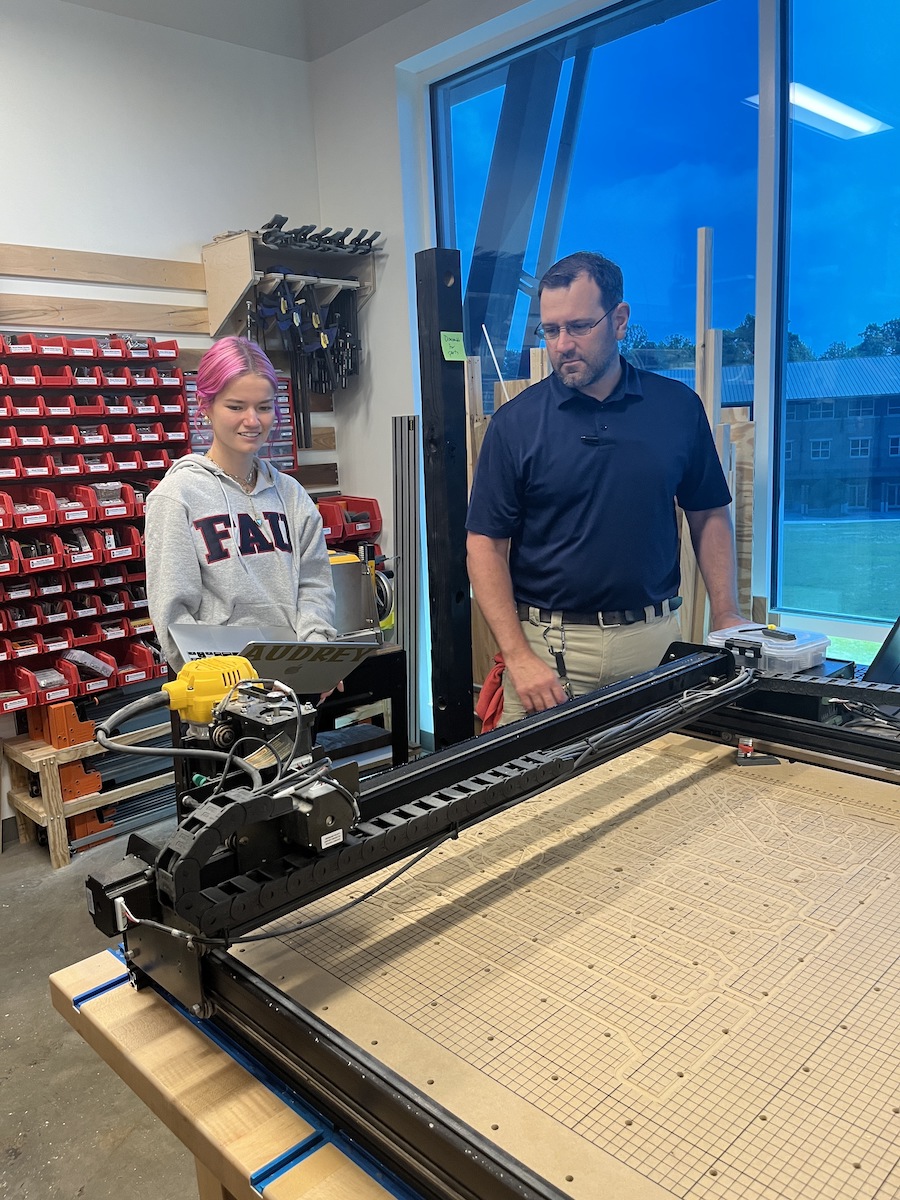Designing a product for a specific client is an incredibly rich and multi-layered learning experience. In addition to leveraging skills like solution seeking, critical thinking, connecting, communicating and innovating, to ensure the clients needs are met, attributes like empathy, adaptability and creativity are key contributors to success. In Digital Woodworking, an Upper School Maker, Design and Engineering class, juniors and seniors were paired with PK4 “clients” to design custom Preschool-sized chairs. The scope of work included designing and prototyping custom chairs based on the specific likes and interests of their young clients.
Getting to Know the Client
Kate Hurd, Class of 2024 explained how the process worked, “We first got videos from PK4 students describing their favorite things including their favorite toys, what pets they had, and their favorite breakfast foods. Then, we sent back similar videos as a way to create connection and get to know them. We then had an in-person design brief where we could ask them specifically what they would want in their chair.”
Prototype Design Process
Working in groups Upper School students began the design process, they divided responsibilities based on their areas of proficiency. Alastair Roche, Class of 2024 shared an example from his group,“We decided I was the best at Fusion, the software we are using to design the chair. We are designing one that prioritizes function over looks. I created a modular chair with storage space underneath that can be used for books and toys while including a large space on the back for a design my group mates create. One of my goals is to use as few parts as possible while still creating a sturdy chair.”
Similarly, Ben Edwards, Class of 2023, and his group are creating almost identical chairs for each of their students but with a slight differentiation that the kids will love. Ben explained, “Instead of making individual chairs for each student, we will make four chairs that are the same but with different engravings with each kid’s name on the back. Once each student receives their chair, they can paint and color it however they want. This is so they can, in a way, say they made it. We like that this method is more collaborative than just making them a chair based on what they told us.”
Some groups are taking it a step further, making extremely individualized chairs that reflect the specific interests of their PK4 friends. For example, Seniors Audrey Mitcham and Jackson Kelly are creating a Hot Wheels-themed chair with tracks at the armrests and storage space for up to 6 cars. Audrey explained why they chose to make an interactive chair, “When we first interviewed Rowan A, we noticed right away that he was really active. We think that he needs a chair that he can play with while he’s sitting down.”
Final Collaboration
Once the chairs are designed, they are prototyped with cardboard, and milled using the CNC machine and laser cutters. Upper School Maker students will bring the final products to PK4 and assist while they paint and color their chairs. While the design work and manufacturing were a labor of love for Upper School Digital Woodworking students, it was a collaborative effort that allowed both groups of students to tap into their creativity and innovation while fostering relationships with one another.








